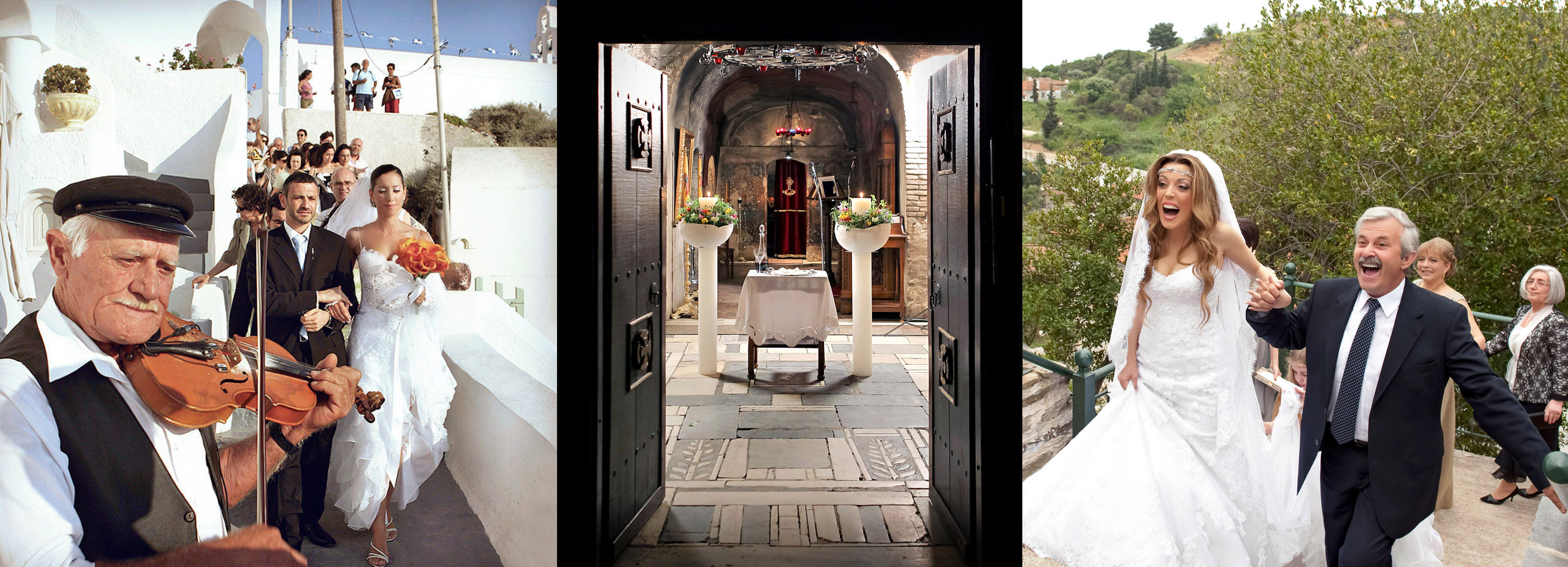


A complete guide of how the Greek wedding traditions are still relevant to modern couples getting married in the UK, the US, Canada, Australia, and other diaspora countries, respecting their heritage in a contemporary way.
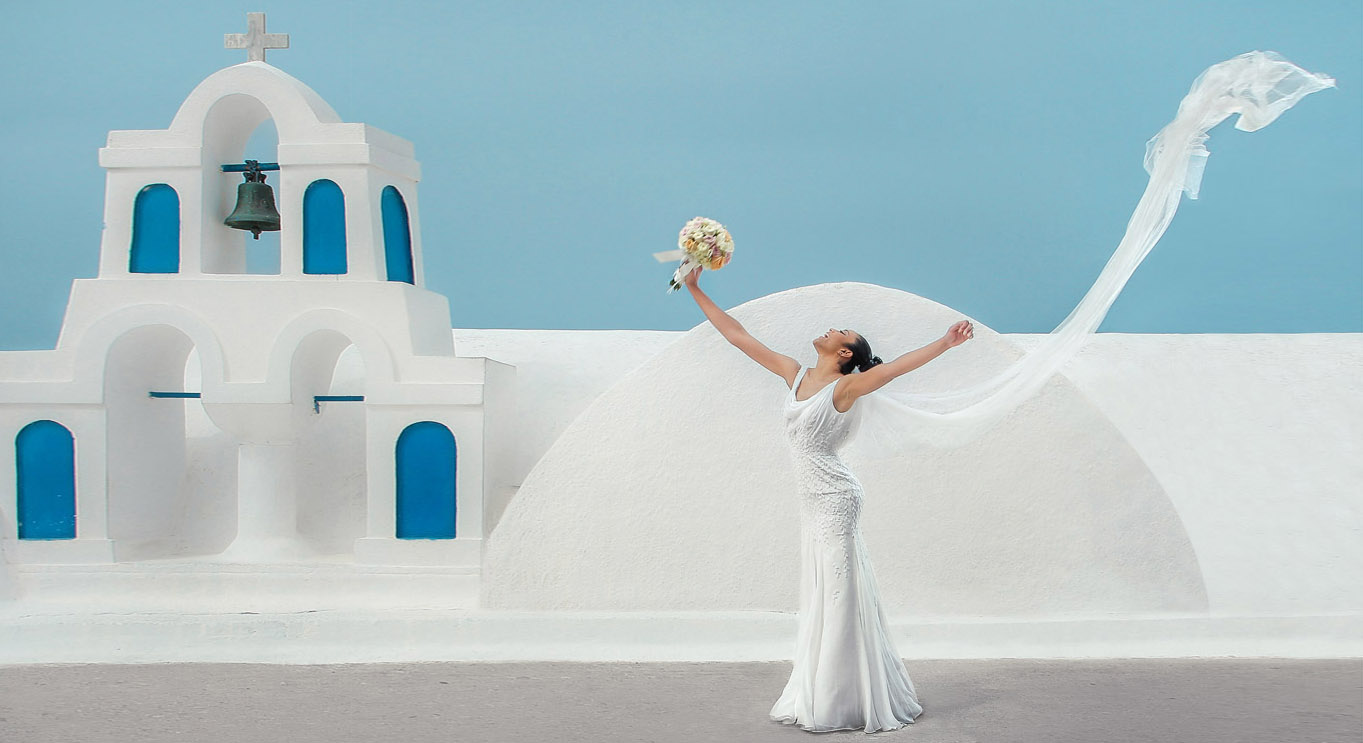
There are numerous traditions that come in stages with every stage having its own process, meaning, and symbolisation according to customs and religion rituals. It’s no wonder that, although a couple can follow as many rituals as they want, the majority of Greek weddings follow most of the traditions. Passing on our valuable heritage, one way or another, is important, and we all feel it deep in our souls.
On a wedding, the photographers are the only vendors who follow the couple from the begging to the end of their big day. That means they are the lucky ones who collect great experience and wedding knowledge. This is just a small sample of an 18-year professional life as a Greek wedding photographer, highlighting the breadth and wealth of the Greek culture!
Hope you enjoy reading this Greek wedding traditions “memoir” just as much as I did writing it!
Part 1/2
Engagement Rings
It is very likely for a Greek couple to exchange engagement rings prior the wedding. In the previous years, if a woman was seen hanging out with a man, especially in the evening hours, she was criticised by society and considered a woman with no values. To restore the girl's reputation, the man seen with her should give a wedding promise. That promise was an engagement ceremony, where the couple exchanged engagement rings and wore them on their left ring finger. When they got married, the same engagement rings were their wedding rings, too, only after the ceremonial rituals and blessings they were worn on the right hand to signify the couple's new “man and wife” status! Today, couples get engaged to share the joy they feel for having found their significant other and the person they want to spend their entire life with! Plus, to get the parents' blessings for the new chapter of their life opening up in front of them! At remote villages in Greece, an engagement ceremony is still considered a big deal.
Wedding Date
A couple can get married anytime they want, except during fasting periods, according to the Orthodox Church. As for the day of the wedding, most weddings used to take place on a Sunday. Nowadays, many couples prefer to have their wedding on a Saturday. That said, Sundays remain favourite wedding days, although many couples show a preference for weekday weddings, too.
Making the Bed
The “making the Bed” is one of the most popular and well-known traditions in Greece that takes place before the wedding. The family and friends of the bride and groom gather at the couple's new home to help with the preparation of the bed. It is a tradition that doesn't usually involve the groom. Present is only the bride-to-be, although modern couples tend to prefer a joined “making the bed” experience! The unmarried bride's friends make the bed and then family members and friends throw money, coins, rice, and rose petals on the bed for good luck and a happy life. This ritual ends with a child (usually a boy) been rolled across the bed to guarantee fertility! Now, if the groom is present, the making of the bed is a tedious and fun tradition, where the single ladies make and re-make the bed until the groom gives his approval!
Dowry (prika)
Until a few years ago, parents with girls would prepare their dowry as it was a big deal back then. This meant that their daughter should have her clothes, underwear, kitchenware, home decorative items, and linen all ready for when she'd meet her husband. These items were either purchased by the single girl herself and her mother, or handmade. On the Thursday before a Sunday wedding, the dowry was taken to the couple's future home with carriages, horses, cars or even trucks! It was also customary for the bride to display her dowry at her parent's home so people could wish her upon her imminent wedding, before she moved the dowry to her new home. Today, dowry is no longer a necessity, except for very few cases in villages.

Can I see the Bride?
The groom to be is not allowed to see his bride the day before the wedding. It is considered bad luck if otherwise. If for not anything else, it increases suspense!
The groom carries his bride on his hands and, together, they enter their home (or their hotel room) the first night after the wedding. That's a way to cast away the evil spirits lurking under the flooring to catch the bride!
The Number of Koufeta
The number of koufeta placed inside a bomboniera should always be an odd number, which usually 5 or 7. That is because it's believed that an odd number cannot be divided by 2. It represents the wish the new couple will never be divided. That aside, the koufeta are part of the servings to the guests at the house the morning following the wedding. It's also a tradition that single women sleep with a couple of koufeta under their pillow for 3 days so they can dream of their husband to be!
Let's Cross the Doorstep Together, Honey!
It is believed that if the bride trips or falls while passing the doorstep of her new home, she will have a turbulent marriage. This is another reason why the groom lifts her up in his arms and takes her inside their home!
It's Bad (or Good) Luck to...
• It is bad luck a bride sees another bride.
• If it's raining on your wedding day, you should be happy! The rain makes the land fertile. Likewise, if it rains the day of your wedding, you will have many children!
• If the wedding rings or stefana fall down, it is not a good sign.
• Leap year weddings were considered to be doomed to fail for thousands of years now. The Romans believed that February was the month of the dead, so no weddings were performed during that month until very recently. It all started with royal families which ruled that when a wedding between blue-blooded was taking place, no other wedding was allowed within that same year. When a king got married on a leap year, nobody else could get married that year. Over the course of time that incident became a superstition and was established as a ground rule: No couple should get married on a leap year. What can I say? Are you eager to postpone your wedding for another year and a day!!!
Can I Have a Cup of Coffee? Heck, NO!
In some areas in Greece, the family (particularly old ladies) doesn't offer a cup of coffee. Even to the photographer! They believe they shouldn't be making and drink coffee on a wedding day!
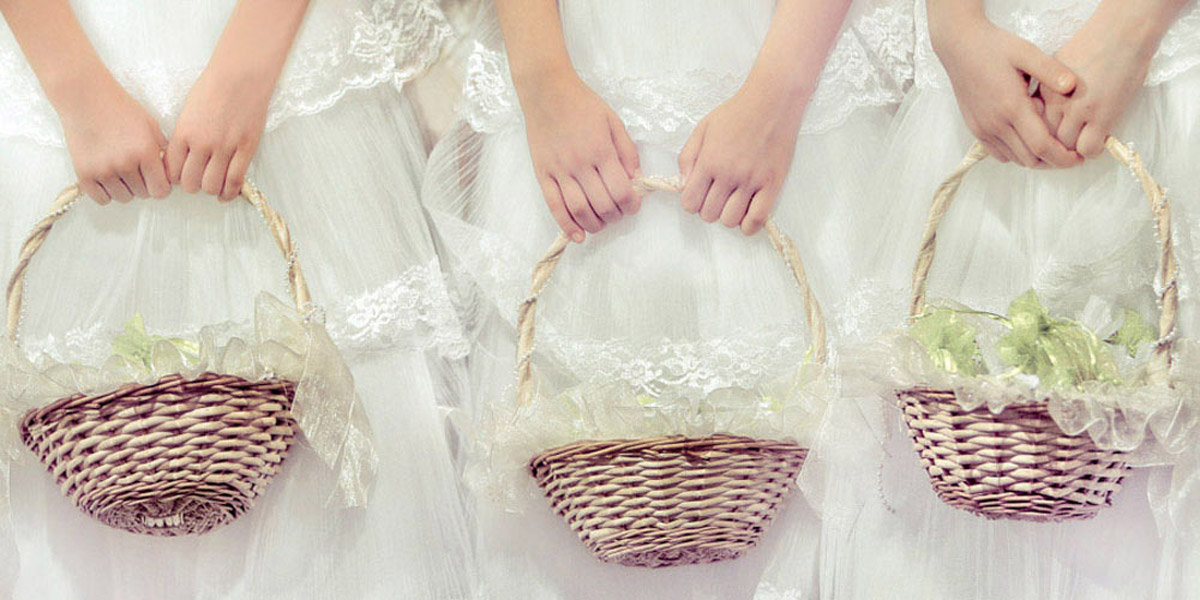
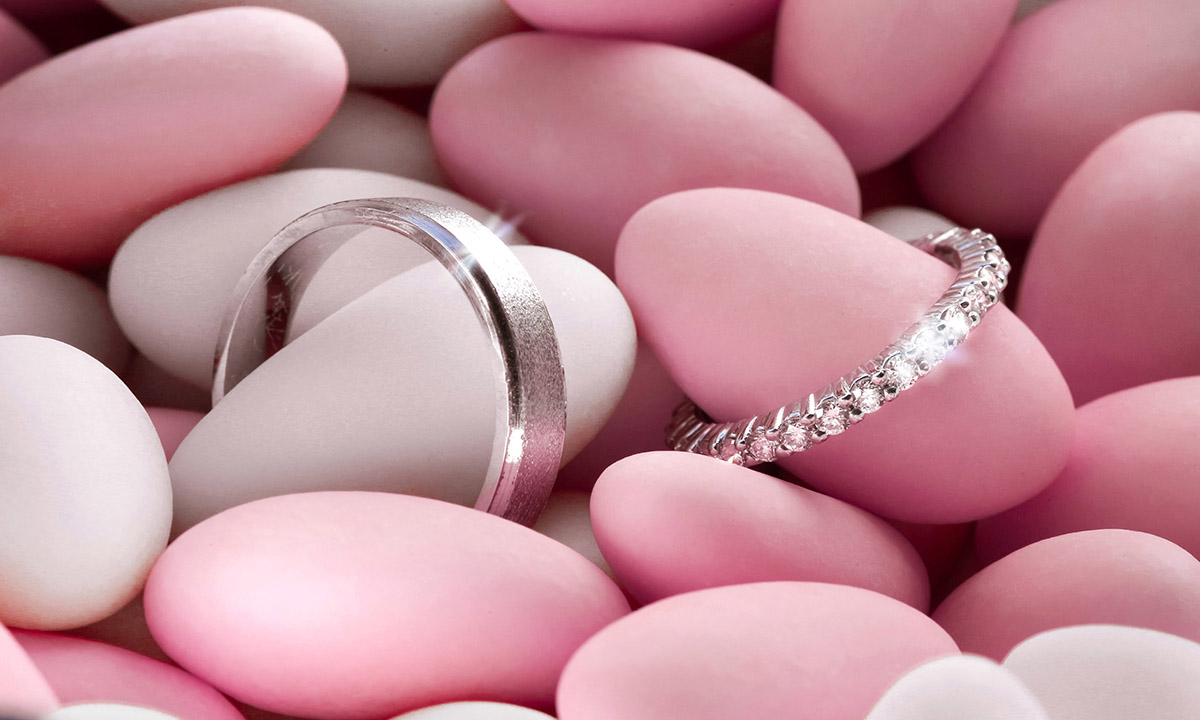
We love greek wedding traditions, however
The rich Greek folklore is meant to add traditional elements to a wedding and not overwhelm the couple and their families with too much stress. Unlike what was believed in the past – that if something is not done as the ancestors dictated then the wedding was doomed to fail – people have finally convinced themselves that tradition is there to make things happier and merrier, not harder :)
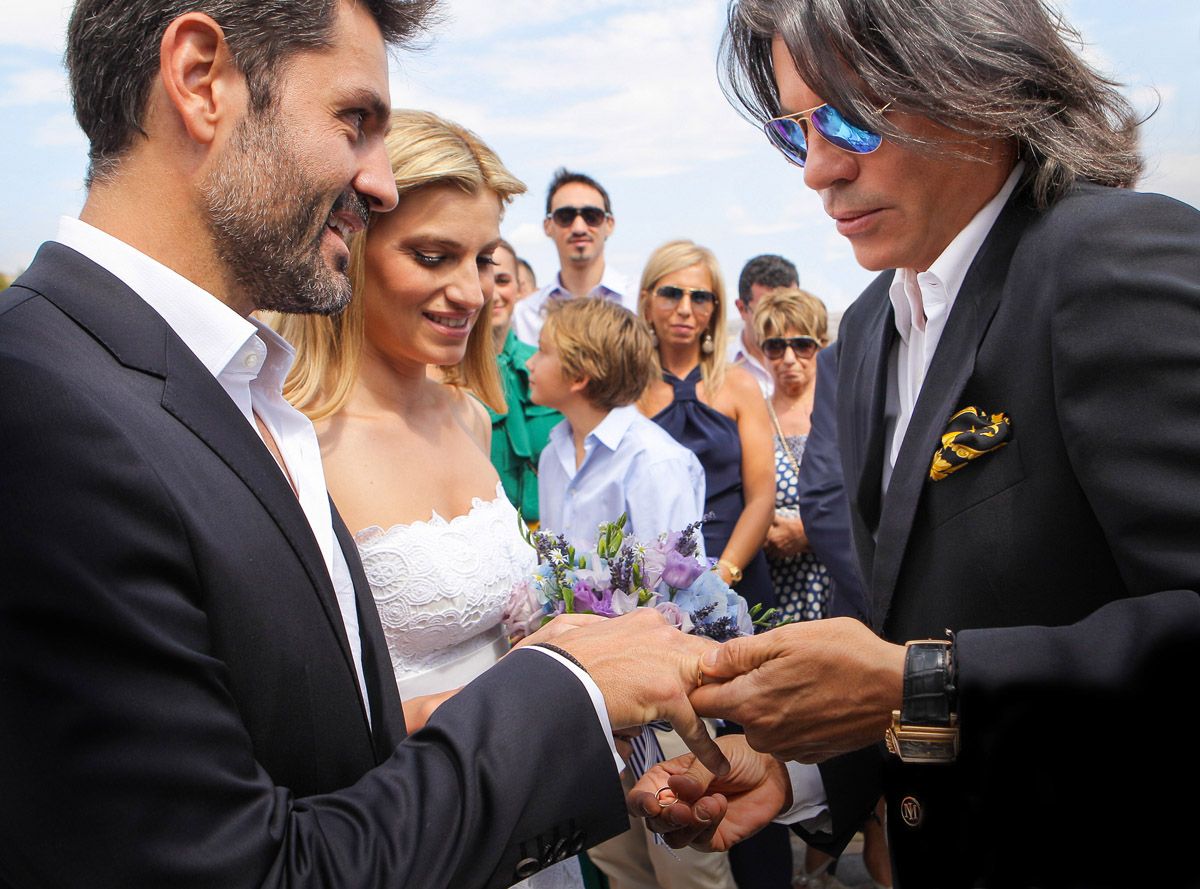

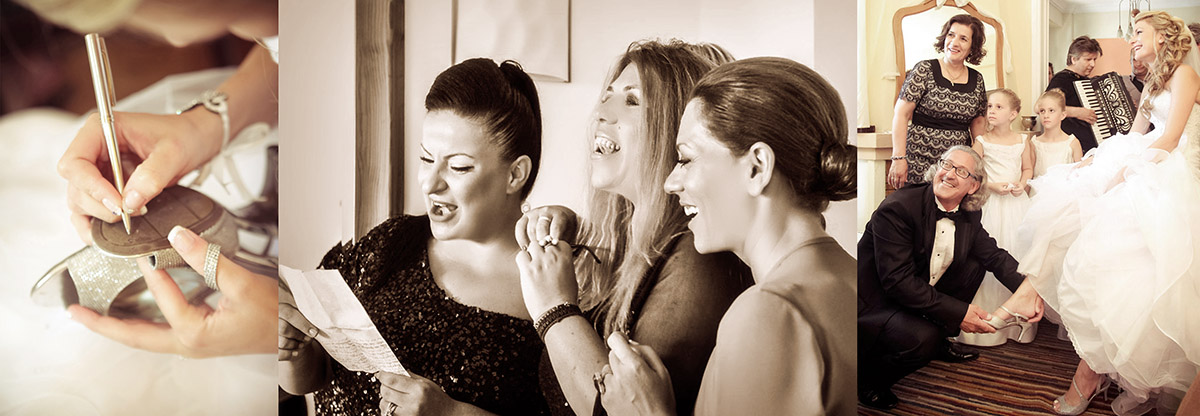

Truth be told, nobody wants to miss the bride's arrival. And, when she meets with her groom and they kiss they all clap their hands! What a wonderful sensation!
“This is a great mystery, and it is an illustration of the way Christ and the Church are one.” (Ephesians 5:32)
As Fr Joseph Paliouras mentions: For Apostle Paul marriage is a great Mystery and illustrates a bond of perfect union and devotion; one that is eternal and unbreakable. The very presence of our Lord at the Wedding at Cana (John 2:1-12) just shows us how important this mystery is to our Holly Church, and we can all understand why it is so blessed.Two people become one under the eyes of God and promise to share a life filled with sincere, pure, and constant love and respect, not withstanding each other's failures and defects; just like Christ gave himself for the church. To all of you planning to get married soon, please accept my fatherly advice and choose to start your new life and meet within the bosom of our Church.
(The Very Revd. Protopresbyter Joseph Paliouras serves at the 12 Apostles Church in Hertfordshire, UK).
